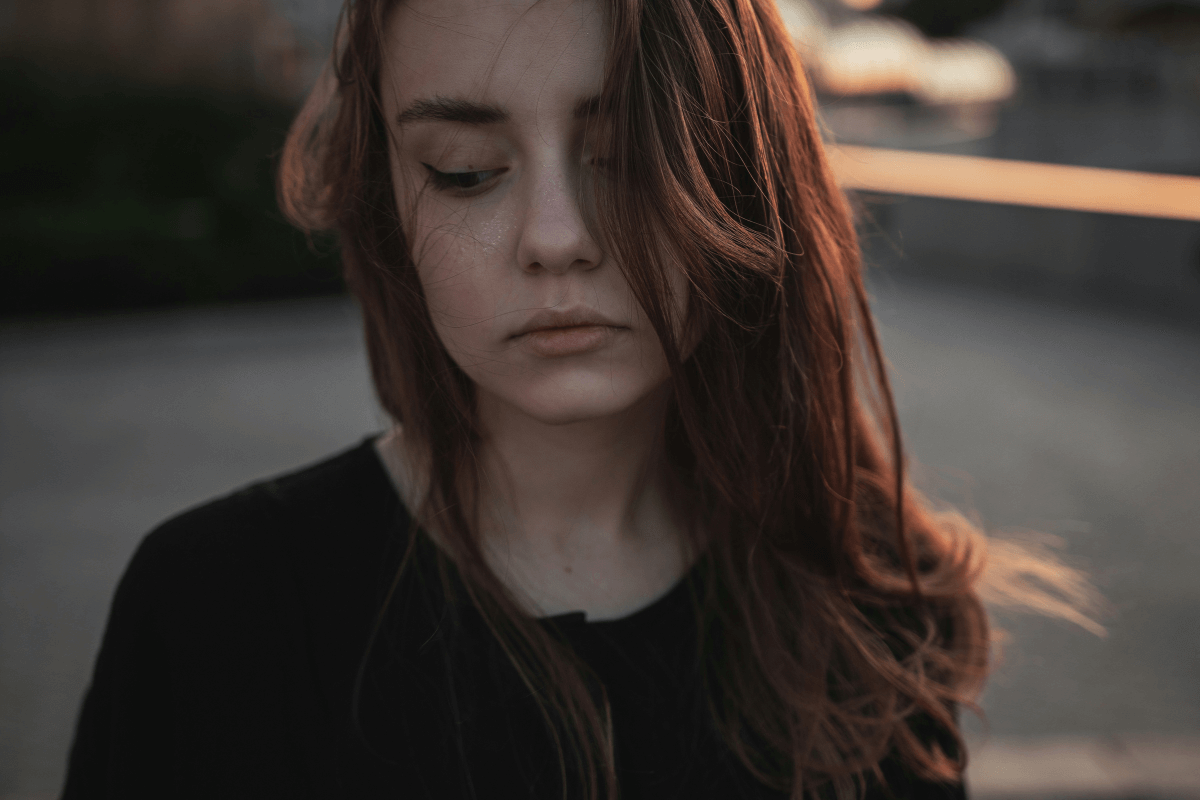
Mood disorders are a common struggle among adolescents and teens. For parents, it can be challenging to determine if the mood swings your teen experiences are a normal part of healthy development or a sign of something else. The teen years are often complicated. They include years of fluctuating and frequently changing emotions. When your teen struggles with a mood disorder, their natural developmental changes can be significantly more challenging to manage.
A 2019 study published in the Journal of Abnormal Psychology shows the rate of mental health struggles for teens continues to rise. Between 2009 and 2017, the rate of major depression among teens between ages sixteen and seventeen increased by almost 70%. Individuals who experience feelings of hopelessness and anxiety increased by more than 71% in individuals between ages seventeen and twenty-five. The survey also showed that one out of every five teen girls (ages twelve to seventeen) experienced major depression within the last year, and the suicide rate among teens increased 56% between 2008 and 2017.
Since 2012, the rate of teen depression and bipolar disorder has increased significantly. Recent data shows as more than 11% of teens experienced at least one major depressive episode in the last year, and more than 14% of teens today experience depression and bipolar disorder. Unfortunately, these mental health struggles have led to an increase in teen suicide and addiction. In 2017, suicide was the second leading cause of death for teens, and according to a 2016 study, almost half of teens who struggle with a mental health condition will have a substance use disorder if their mental health is condition is left untreated.
Mood Disorders Explained
A mood disorder can impact your teen in a range of ways. Mood disorders are a category of mental health conditions that include all forms of depression and bipolar disorders. Mood disorders can impact anyone, regardless of age. In teens and young adults, their symptoms and how the symptoms present may appear different.
Mental health professionals turn to the Diagnostic and Statistical Manual of Mental Disorders for diagnostic criteria pertaining to mental illness. When the most recent version of the manual was released in 2013, the category of mood disorders was divided into two specific groups. This consisted of bipolar in related disorders end the category of depressive disorders. When your teen seeks treatment at a teen-focused treatment center like Beachside for a mood disorder, members of the treatment team will work with them and your family to develop a treatment plan to address their mood disorder. You may hear treatment providers refer to diagnoses such as bipolar I, bipolar II, or major depressive disorder. To understand what to expect at a mood treatment center, it is helpful to understand these conditions and how treatment at Beachside can help your teen better manage their symptoms.
Common Types of Mood Disorders
As previously mentioned, the diagnostic and statistical manual of mental disorders divides the category of mood disorders into depressive disorders and bipolar disorders. There are different types of each, and the types often consist of similar yet slightly different symptom patterns.
Bipolar I
Bipolar I (formally referred to as manic depression) is characterized By manic phases. Someone with bipolar one will experience increased levels of energy and activity and alternating states of excessive happiness or euphoria followed by irritability. During a manic phase, a teen with bipolar I may engage in activities that can be harmful to both themselves or those around them. Unfortunately, stages of mania typically lead to a disconnect between activities and consequences. Therefore, a teen with bipolar I who is in this state of mania may not understand the adverse effects their actions have on themselves or others.
Bipolar II
Bipolar II requires your teen to experience at least one episode of hypomania. Hypomania is a less severe form of mania. Additionally, they must experience an episode, either current or in the past, of depression. Notably, bipolar II disorder requires that your teen does not have a history of manic episodes.
Major Depressive Disorder
Major depressive disorder goes by a range of names. You may hear it referred to as clinical depression or major depression. To meet the diagnostic criteria for a major depressive disorder, symptoms of depression (including extreme sadness, hopelessness, or emptiness) must be present for more than two weeks and lead to a significant impairment in day-to-day functioning.
Symptoms of Mood Disorders in Teens
Mood disorders in teens often “look” different than those in adults. Because of these differences, it can be challenging to diagnose or detect mood disorders in these age groups. For younger children this is because they are not equipped to explain their feelings and emotions in the same way as adults. Teens fall somewhere in the middle. While they may be able to verbalize their symptoms and emotions, they may not understand them well enough to realize that something is wrong. The symptoms of a mood disorder in teens will depend on the teen and the type of disorder. Although some symptoms are unique, there are others that are seen in most cases.
Mood disorder symptoms can be physical, behavioral, or emotional. A teen with a mood disorder may complain of frequent physical ailments such as fatigue, stomach pains, or headaches. You may also notice unexplained weight changes, reduced energy, and changes in sleeping patterns. Behaviorally, your teen may seem “out of sorts.” They may exhibit ongoing sadness, despair, guilt, and reduced self-esteem. They may also seem disinterested in activities or social groups that once brought joy. A teen with a mood disorder may seem disorganized and have difficulties focusing. They may also come across as irritable and hostile. They may also express feelings of worthlessness or talk of self-harm or suicide. If this occurs, it is essential to seek medical help immediately.
The emotional symptoms of mood disorders in teens will fluctuate in terms of intensity and severity. However, if your teen’s symptoms last for more than two weeks or they interfere with their day-to-day functioning, it may be time to consider seeking treatment at a program like Beachside. Many of the symptoms of mood disorders in teens are similar to those of other mental health conditions. Your child’s primary care provider can work with you to rule out any other medical or mental health condition before recommending treatment.
What to Expect at A Mood Disorder Treatment Center
When your teen arrives at a mood disorder treatment center like Beachside, a comprehensive evaluation (or assessment) is the first step. These are essential for both the treatment team and your teen to learn more about each other and how treatment can help. Members of the treatment team will ask questions to learn more about your child’s symptoms and any other medical or mental health conditions that may co-exist. The best treatment programs are those that address the specific needs and goals of the patient. By conducting a complete assessment, the treatment team will be able to suggest specific treatment models for your teen.
Treatment for mood disorders is generally a combination of psychotherapy and medication. The most effective form of psychotherapy used to address mood disorders in teens is talk therapy. Common examples of frequently used models include cognitive-behavioral therapy (CBT) and dialectical behavior therapy (DBT).
Cognitive-behavioral therapy or CBT is a widely used therapy for many mental health and addiction disorders. It is also considered the most widely researched mood disorder therapy. During CBT sessions, your teen will learn about how their thoughts, feelings, and behaviors contribute to their symptoms. As they learn more about these connections, they will work with their therapist to learn new ways to change harmful or unhelpful thoughts to healthy ones.
Dialectical behavior therapy or DBT is helpful for teens who struggle to manage and regulate emotion. DBT sessions are designed to help your teen learn healthy and safe ways to manage stressful or upsetting emotions while improving relationships with family and friends. They also practice controlling impulsive behaviors, including potentially harmful behaviors such as self-harm.
Other forms of psychotherapy used to treat mood disorders are interpersonal therapy, problem-solving therapy, and mindfulness-based interventions.
For some teens, medications may also play a role in their treatment plan. It is important to remember that medications are not ideal for all teens and may not be used in all cases. Your teen’s treatment team will consider whether specific medications may help alleviate the intensity of symptoms during the early stages of treatment. Common examples of medications used to manage mood disorder symptoms are mood stabilizers, antidepressants, and anti-psychotics. These medications can help control mood swings or reduce the severity of depression. They may also help your teen control aggression and other behaviors as they start treatment.
Medications are often a short-term solution for symptom management. Most mood disorder medications are prescribed for a limited duration before medically monitored weaning begins. If medications are a part of your teen’s treatment program, it is essential to be sure they take all medications as prescribed and only stop or reduce taking them under their doctor’s supervision. Suddenly eliminating or reducing their medication dose could lead to relapse or other harmful symptoms.
Although treatable, the symptoms of some mood disorders may be life-long struggles for some teens. This means they may require ongoing treatment from time to time to continue adequately managing symptoms as they age. A comprehensive treatment program at Beachside can give your teen the early building blocks they need to safely and successfully manage mood disorder symptoms. The best treatment model and duration of treatment will depend on your teen’s unique needs and circumstances. Mood disorders affect everyone differently, and therefore individuals treatment is a vital part of recovery.
If you are concerned that your teen may struggle with a mood disorder, the admissions team at Beachside can help you learn how our treatment programs can help your teen. Recovery is not a straightforward process, but our caring and compassionate team are here to equip your teen with the tools they need to begin their journey.




